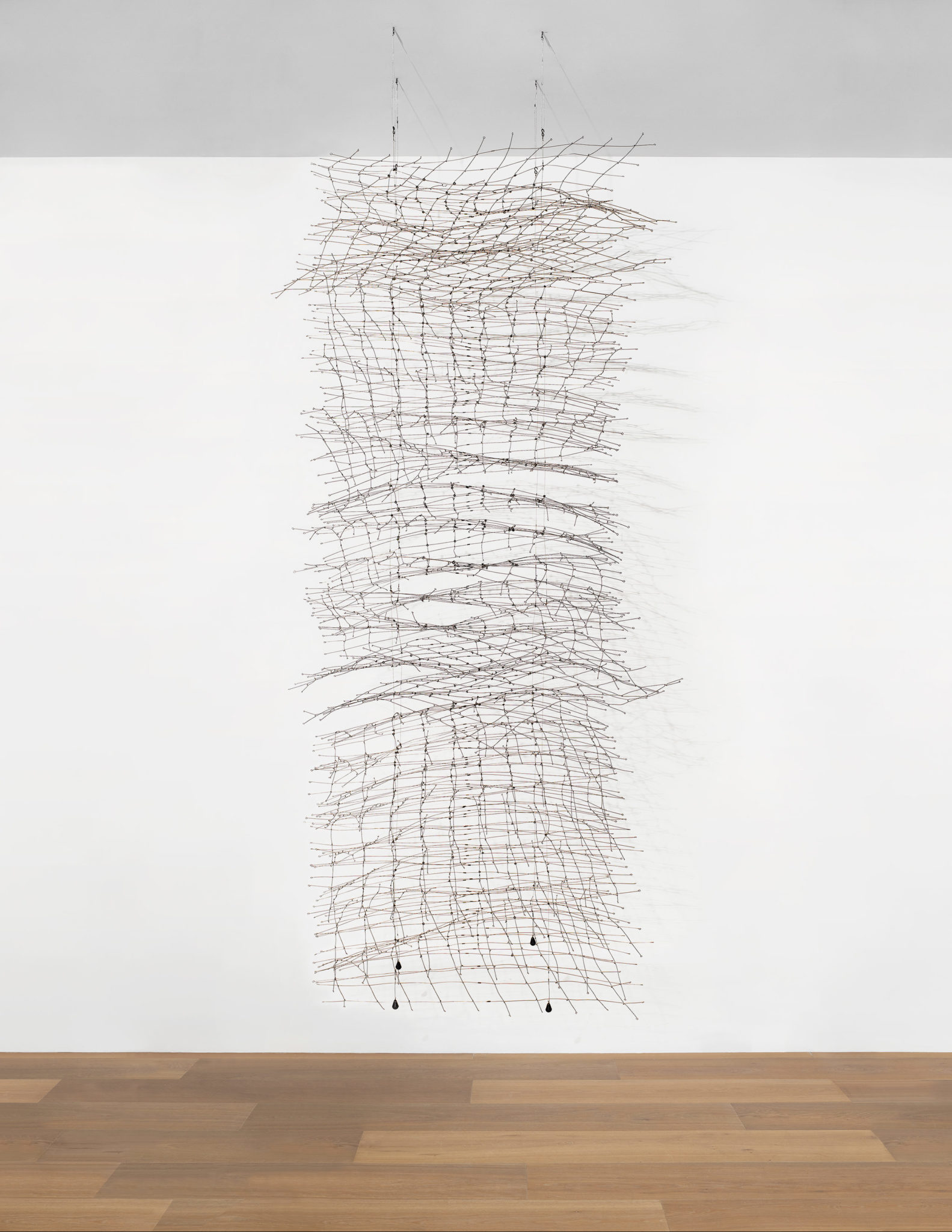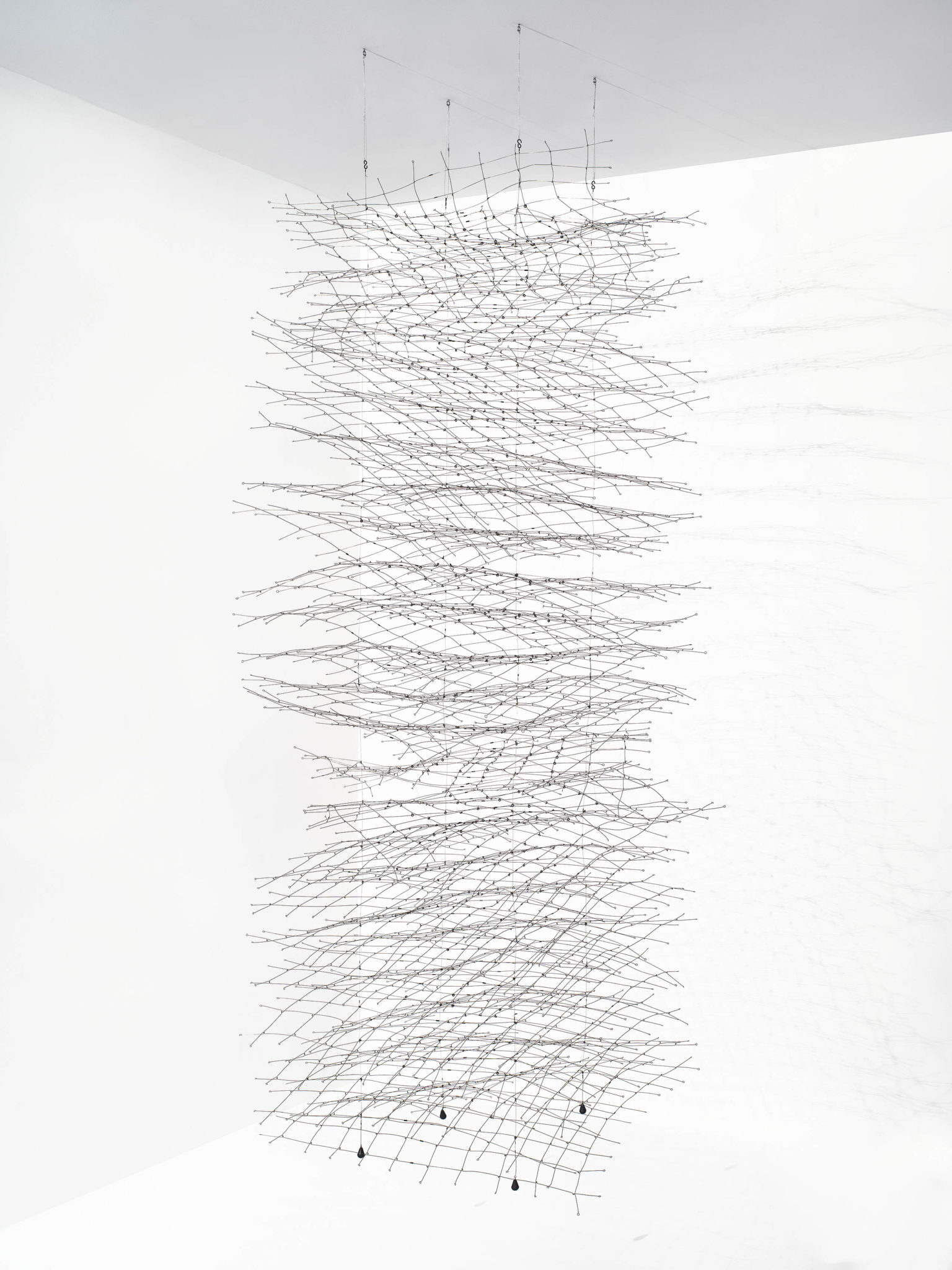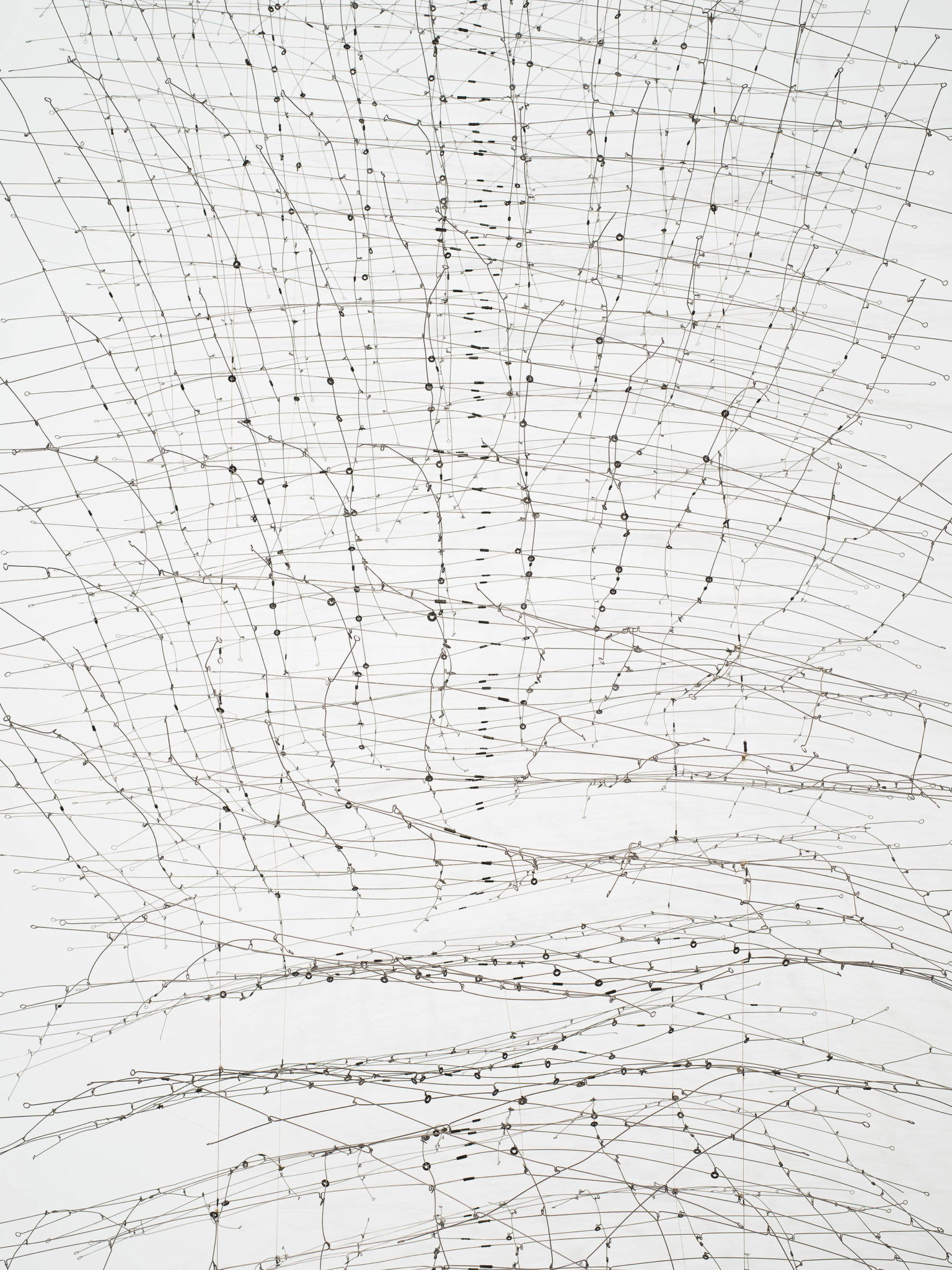Gego
Columna (Reticulárea cuadrada), 1972
Stainless steel rods, iron washers, four sinkers (weights), and nylon thread
137 3⁄4 x 51 3⁄4 x 51 1⁄4 inches (350 x 130 x 130 cm)
© 2018 Fundación Gego
Photo Tom Powel
Born Gertrud Louise Goldschmidt in 1912, Gego largely developed her practice on the periphery of the art world – remaining in her adopted home of Caracas, Venezuela rather than moving to New York. Despite this, Gego’s innovative work began earning recognition in the United States, and in 1959 – the same year the Museum of Modern Art began to acquire her work – the artist arrived in New York. Wedding an expressionistic impulse with the order of the Constructivist grid, Gego rejected stylistic categories and historical trajectories of influence, investing instead in timelessness.
Her 1972 Columna (Reticulárea cuadrada), on view in the stand of Lévy Gorvy, is a standout early example of Reticuláreas (1969–82), the series of suspended gossamer structures for which she is best known. In these non-solid sculptural works, wire lines articulate geometric shapes that assemble to form net-like, three-dimensional volumes. Marking a radical re-engagement with modern sculpture, the Reticuláreas push against the conventions of the category—volume, mass, solidness, and scale—to emphasize line and space: Gego called her method “drawing without paper.”




